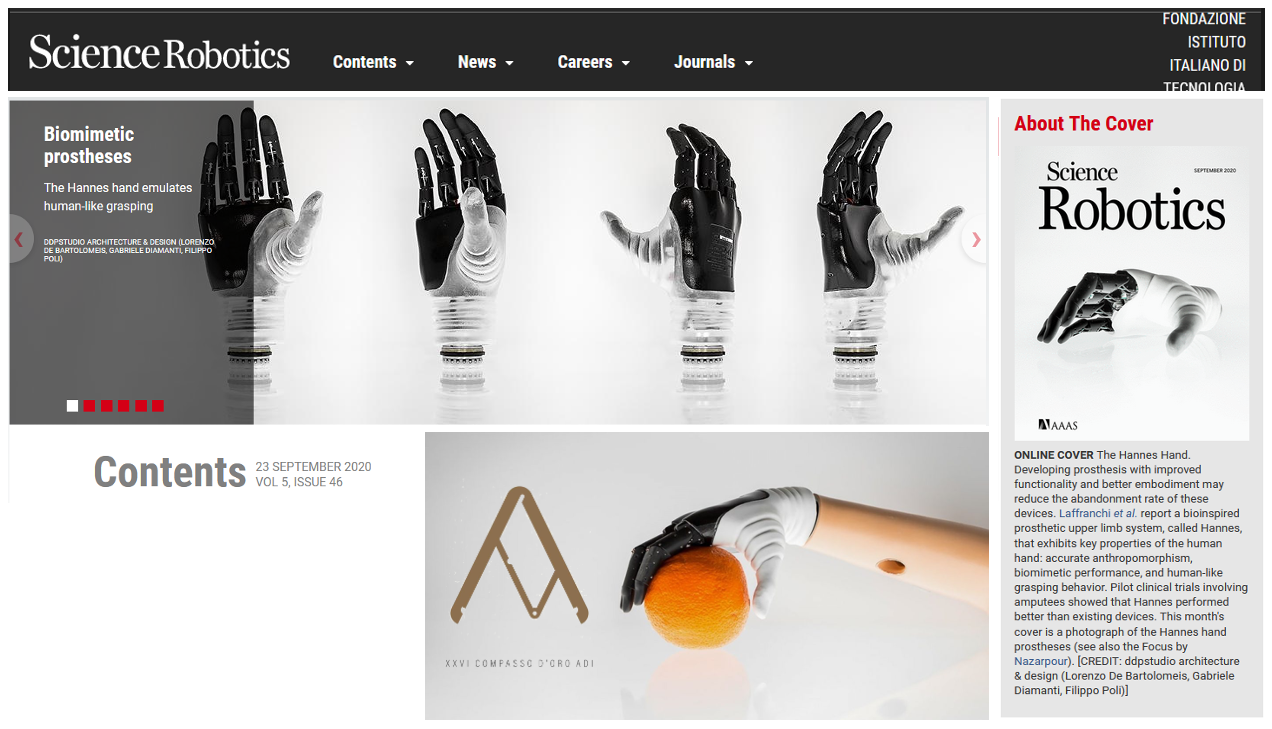
The invention concerns a robotic hand. In particular, a prosthetic or myoelectric hand having fewer actuators than the degrees of freedom and capable of reproducing the movements of a human hand.
The invention concerns a robotic hand. In particular, a prosthetic or myoelectric hand having fewer actuators than the degrees of freedom and capable of reproducing the movements of a human hand.


Patent Status
PENDING

Priority Number
IT201800005213A1

Priority Date
09/05/2018

License
INTERNATIONAL
Problem
Guaranteeing the patient who has lost the limb the possibility of recovering most of the functionality of a hand, while at the same time using an easy-to-learn, highly effective and non-invasive human machine interface (HMI) is nowadays the most important requirement in the field of prosthetics.
The resulting technical problem consists in the possibility of inserting a mechanical transmission system of the differential type to be implemented by a single actuator, inside a hand prosthesis with anthropomorphic features and anthropometric dimensions.
The differential transmission is able to give the multiple outputs a certain freedom of adaptation in terms of kinematic / dynamic action. In this case, the multiple exits in a prosthesis can be represented by the fingers, while adaptability translates into greater naturalness of movement and the possibility of carrying out multiple types of grip on an object.
The motion distribution mechanism designed is compact enough to be housed in the anthropometric dimensions of a 7 ¾ hand, including all the necessary components.
Current Technology Limits
Our Technology and Solution
Hannes has been designed in such a way that the conformation and quality of the movements are as similar as possible to those of a real hand, so that amputees perceive the prosthesis as a part of themselves and not as an external element. Hannes’ peculiarity lies in the mechanical part: a DAG system (Dynamic Adaptive Grasp), which is unique in its kind and confers versatility and naturalness in the movement to the polyarticulated hand, features that are characterised together with the resistance of the materials. All prosthetic hand movements are actuated by a single motor. These construction features allow to obtain a greater robustness and a better battery life that can cover a full day of use.
Advantages
TRL
Team






